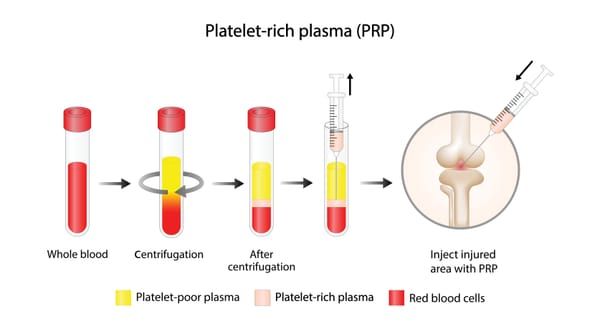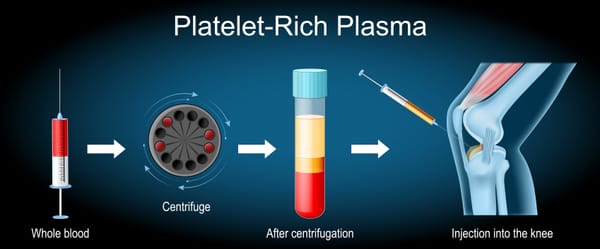Treating Visceral Pain with Sympathetic Nerve Blocks: A Path to Relief

Visceral pain, the deep, cramping, or aching discomfort originating from internal organs, can be a profound challenge for those with conditions like cancer, chronic pancreatitis, or pelvic disorders. Unlike muscle or joint pain, visceral pain is often diffuse and hard to pinpoint, making it difficult to manage with standard treatments like medications or physical therapy. S
ympathetic nerve blocks offer a targeted, minimally invasive approach to alleviate this pain by calming the overactive sympathetic nervous system. In this blog post, we’ll explore visceral pain, how sympathetic nerve blocks work to treat it, and what patients can expect, all explained clearly for a general audience.
What is Visceral Pain?
Visceral pain arises from internal organs such as the pancreas, liver, stomach, intestines, or pelvic organs. It’s often described as deep, squeezing, or cramping, sometimes radiating to areas like the back or pelvis. Common causes include:
- Cancer: Tumors in organs like the pancreas, liver, or colon, or metastases causing obstruction or inflammation.
- Chronic Pancreatitis: Ongoing pancreatic inflammation leading to severe abdominal pain.
- Pelvic Disorders: Conditions like endometriosis, interstitial cystitis, or pelvic cancers causing lower abdominal or pelvic pain.
- Organ Obstruction: Blockages in the bile ducts, intestines, or ureters from tumors, scar tissue, or gallstones.
Symptoms may include nausea, sweating, or a vague sense of discomfort, often making it hard to localize. Visceral pain affects 20-30% of patients with advanced cancer and is a significant issue in chronic abdominal or pelvic conditions, per a 2019 study in The Lancet Gastroenterology & Hepatology. When medications like opioids or anti-inflammatories fall short or cause side effects, sympathetic nerve blocks can provide targeted relief.
What Are Sympathetic Nerve Blocks?
Sympathetic nerve blocks involve injecting a local anesthetic, sometimes combined with a corticosteroid or a neurolytic agent (e.g., alcohol or phenol), near specific nerves in the sympathetic nervous system. This system, which controls involuntary functions like digestion and blood flow, plays a key role in transmitting visceral pain signals. By interrupting these signals, blocks can significantly reduce pain.Common sympathetic blocks for visceral pain include:
- Celiac Plexus Block: Targets nerves in the upper abdomen for pancreatic, liver, or stomach pain.
- Superior Hypogastric Plexus Block: Targets pelvic nerves for uterine, ovarian, or bladder pain.
- Ganglion Impar Block: Targets nerves at the base of the spine for rectal, perineal, or coccyx pain.
- Splanchnic Nerve Block: Targets upper abdominal nerves, an alternative for similar conditions as the celiac block.
Performed by pain specialists or interventional radiologists, these outpatient procedures use imaging guidance (e.g., ultrasound, fluoroscopy, or CT) for precision and typically take 30-60 minutes.
How Sympathetic Blocks Treat Visceral Pain
The sympathetic nervous system relays pain signals from internal organs to the brain. In conditions like cancer or chronic pancreatitis, these nerves can become hyperactive, amplifying pain. Sympathetic nerve blocks work by:
- Blocking Pain Signals: Anesthetic temporarily halts nerve activity, stopping pain transmission.
- Reducing Inflammation: Corticosteroids, if included, decrease inflammation around the nerves, extending relief.
- Long-Term Disruption (Neurolysis): In severe cases, such as terminal cancer, neurolytic agents permanently damage nerves, offering longer-lasting relief.
These blocks are particularly effective for sympathetically mediated visceral pain, common in pancreatic cancer, pelvic malignancies, or chronic pancreatitis. They’re often considered when:
- Pain is not well-controlled by medications.
- Opioid side effects (e.g., drowsiness, constipation) are intolerable.
- Patients aim to improve quality of life, especially in palliative care.
What Does the Evidence Say?
Research supports sympathetic nerve blocks as an effective tool for visceral pain, particularly in cancer and chronic pancreatitis. Key findings include:
- Celiac Plexus Block/Neurolysis: A 2020 meta-analysis in Pain Medicine found that 70-80% of pancreatic cancer patients had significant pain relief after celiac plexus neurolysis, lasting 3-6 months, with 50% reducing opioid use.
- Superior Hypogastric Plexus Block: A 2019 study in Journal of Pain Research reported that 60-70% of patients with pelvic cancer pain experienced at least 50% pain reduction for 2-4 months.
- Ganglion Impar Block: A 2021 review in Regional Anesthesia & Pain Medicine noted that 65% of patients with perineal or rectal cancer pain had substantial relief for 1-3 months.
- Chronic Pancreatitis: A 2018 study in Clinical Journal of Pain found that 50-60% of patients reported improved pain and quality of life for 2-3 months after celiac plexus blocks.
- Patient Experiences: On platforms like Reddit, patients with cancer-related visceral pain describe blocks as “transformative,” with some regaining the ability to eat or rest comfortably, though results vary.
Sympathetic blocks are not a cure, and relief may be temporary, requiring repeat procedures. They’re less effective for pain with somatic (muscle/bone) or neuropathic components, and more research is needed to refine neurolytic techniques and long-term outcomes.
What to Expect from Sympathetic Nerve Blocks
Here’s what the process typically involves:
- Pre-Procedure: Your doctor will review your medical history, pain characteristics, and imaging (e.g., CT or MRI) to confirm visceral pain and select the appropriate block. A diagnostic block with anesthetic may be used to predict success. Blood tests ensure safety, especially for neurolysis.
- Procedure: Under sedation or local anesthesia, a needle is guided to the target nerves (e.g., celiac plexus near the aorta) using ultrasound, fluoroscopy, or CT. Anesthetic, and sometimes a corticosteroid or neurolytic agent, is injected. The procedure lasts 30-60 minutes.
- Recovery: Most patients go home the same day. Mild soreness or bruising at the injection site is common for a few days. Pain relief may start within hours (anesthetic blocks) or days (neurolysis) and can last weeks to months.
- Side Effects: Temporary effects include low blood pressure (especially with celiac or hypogastric blocks), diarrhea, or warmth in the treated area. Rare risks (1-2%) include bleeding, infection, or nerve/organ injury, minimized by imaging guidance.
Benefits and ConsiderationsBenefits:
- Rapid pain relief, often within hours to days, enhancing quality of life.
- Reduces opioid use, minimizing side effects like sedation or nausea.
- Minimally invasive with faster recovery than surgical options.
- Repeatable for temporary blocks or long-lasting with neurolysis.
- Supports daily activities and complementary therapies like physical therapy.
Considerations:
- Temporary side effects like hypotension, diarrhea, or localized soreness (typically resolves in days).
- Rare risks include organ puncture, nerve damage, or paralysis (with spinal blocks), though imaging reduces these to under 1%.
- Not all visceral pain responds, particularly if non-sympathetic nerves are involved.
- Costs range from $1,000-$5,000, with insurance coverage varying (often approved for cancer pain, less consistently for chronic pancreatitis).
- Neurolytic blocks carry permanent risks, requiring careful consideration, especially in non-terminal conditions.
Is a Sympathetic Nerve Block Right for You?
Sympathetic nerve blocks are typically considered for patients with visceral pain who:
- Have moderate to severe pain resistant to medications or other treatments.
- Experience significant side effects from opioids or other analgesics.
- Have pain from conditions like pancreatic cancer, pelvic malignancies, or chronic pancreatitis.
- Seek improved quality of life, particularly in palliative care settings.
Your healthcare team, including oncologists, pain specialists, or palliative care providers, will evaluate:
- The pain’s origin and characteristics, using exams, imaging, or diagnostic blocks.
- Your overall health, including cancer stage or chronic disease status.
- Your goals, such as pain relief, reduced medication use, or better function.
Discuss the procedure’s risks, benefits, and expected outcomes with your provider. Choosing a specialist experienced in sympathetic blocks and imaging guidance is essential for safety and effectiveness.
Complementary Treatments
Sympathetic blocks are often integrated into a comprehensive pain management plan, including:
- Medications: Opioids, NSAIDs, or neuropathic drugs (e.g., gabapentin) for residual pain.
- Palliative Care: Holistic support for pain, emotional well-being, and quality of life in cancer.
- Physical Therapy: Gentle exercises to maintain mobility, if feasible.
- Psychological Support: Cognitive-behavioral therapy or mindfulness to cope with pain’s emotional toll.
- Other Interventions: Intrathecal pumps, spinal cord stimulation, or ablation for complex pain.
A 2021 study in Journal of Clinical Oncology found that combining sympathetic blocks with palliative care reduced pain severity by 40-50% in advanced cancer patients, highlighting the power of a team approach.
Living with Visceral Pain
Visceral pain can feel overwhelming, often affecting appetite, sleep, and emotional health. Openly sharing your pain’s details—intensity, location, and triggers—with your healthcare team helps tailor treatment. Support groups, through organizations like CancerCare (cancercare.org) or the American Chronic Pain Association, or online communities like Reddit, offer a space to share experiences and coping strategies.Emotional and practical support is crucial. Pain can heighten stress or isolation, so connecting with counselors, family, or palliative care teams can provide comfort. Simple adjustments, like pacing activities or using relaxation techniques, can also help.
Why Awareness Matters
Visceral pain affects 30-50% of patients with advanced cancer and many with chronic abdominal or pelvic conditions, yet it’s often undertreated due to its complexity, per a 2020 review in Pain Management. Sympathetic nerve blocks are a valuable but underutilized tool, partly due to limited awareness or access to specialists. Raising awareness empowers patients to explore advanced options and advocate for relief.If you or a loved one is struggling with visceral pain, consult your doctor, oncologist, or a pain specialist about whether sympathetic nerve blocks could help. Resources like the National Cancer Institute (cancer.gov) or the American Pain Society provide valuable information and support.
By spotlighting treatments like sympathetic nerve blocks, we can enhance quality of life and offer hope to those facing visceral pain. Let’s keep the conversation going—no one should endure this pain alone.
Disclaimer: This blog post is for informational purposes only and not a substitute for professional medical advice. Consult a healthcare provider before considering sympathetic nerve blocks or any new treatment for visceral pain.



